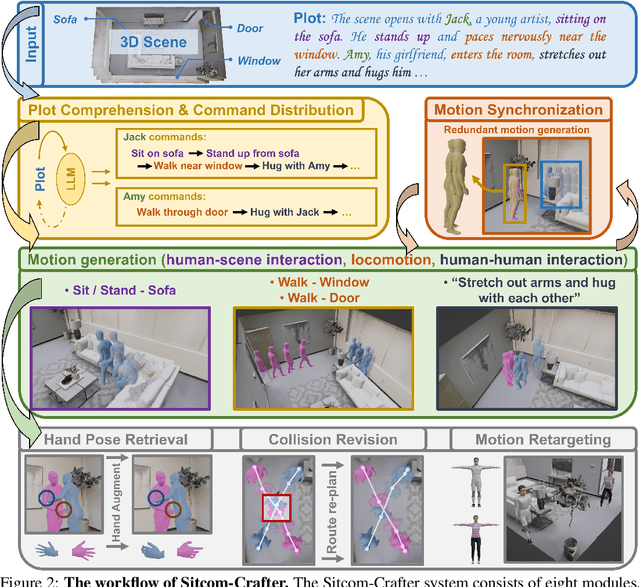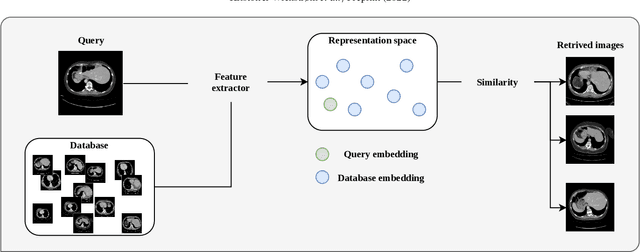Michael Christian Kampffmeyer
Sitcom-Crafter: A Plot-Driven Human Motion Generation System in 3D Scenes
Oct 14, 2024



Abstract:Recent advancements in human motion synthesis have focused on specific types of motions, such as human-scene interaction, locomotion or human-human interaction, however, there is a lack of a unified system capable of generating a diverse combination of motion types. In response, we introduce Sitcom-Crafter, a comprehensive and extendable system for human motion generation in 3D space, which can be guided by extensive plot contexts to enhance workflow efficiency for anime and game designers. The system is comprised of eight modules, three of which are dedicated to motion generation, while the remaining five are augmentation modules that ensure consistent fusion of motion sequences and system functionality. Central to the generation modules is our novel 3D scene-aware human-human interaction module, which addresses collision issues by synthesizing implicit 3D Signed Distance Function (SDF) points around motion spaces, thereby minimizing human-scene collisions without additional data collection costs. Complementing this, our locomotion and human-scene interaction modules leverage existing methods to enrich the system's motion generation capabilities. Augmentation modules encompass plot comprehension for command generation, motion synchronization for seamless integration of different motion types, hand pose retrieval to enhance motion realism, motion collision revision to prevent human collisions, and 3D retargeting to ensure visual fidelity. Experimental evaluations validate the system's ability to generate high-quality, diverse, and physically realistic motions, underscoring its potential for advancing creative workflows.
A clinically motivated self-supervised approach for content-based image retrieval of CT liver images
Jul 11, 2022



Abstract:Deep learning-based approaches for content-based image retrieval (CBIR) of CT liver images is an active field of research, but suffers from some critical limitations. First, they are heavily reliant on labeled data, which can be challenging and costly to acquire. Second, they lack transparency and explainability, which limits the trustworthiness of deep CBIR systems. We address these limitations by (1) proposing a self-supervised learning framework that incorporates domain-knowledge into the training procedure and (2) providing the first representation learning explainability analysis in the context of CBIR of CT liver images. Results demonstrate improved performance compared to the standard self-supervised approach across several metrics, as well as improved generalisation across datasets. Further, we conduct the first representation learning explainability analysis in the context of CBIR, which reveals new insights into the feature extraction process. Lastly, we perform a case study with cross-examination CBIR that demonstrates the usability of our proposed framework. We believe that our proposed framework could play a vital role in creating trustworthy deep CBIR systems that can successfully take advantage of unlabeled data.
 Add to Chrome
Add to Chrome Add to Firefox
Add to Firefox Add to Edge
Add to Edge